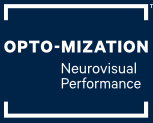 It's that time of the year again! With March Madness around the corner, the world of college basketball is getting ready for “The big dance”. Who wouldn’t want their team to sink that buzzer-beater at the championship game and take the tournament? Just as Kris Jenkins did three years ago when he hit a 3-pointer at the buzzer that earned his team the championship title.
It's that time of the year again! With March Madness around the corner, the world of college basketball is getting ready for “The big dance”. Who wouldn’t want their team to sink that buzzer-beater at the championship game and take the tournament? Just as Kris Jenkins did three years ago when he hit a 3-pointer at the buzzer that earned his team the championship title.
The annual NCAA tournament has every college basketball player’s adrenalin running extra high. It is the highlight of the season, not only for the teams but also for fans and families.
The Role of Vision in Basketball
Did you ever stop to consider the importance of excellent vision in sinking such an unforgettable shot? When we say vision, we are referring to the visual skills relevant to basketball, which are different from visual acuity, also known as 20/20 sight. Visual acuity of 20/20 only means an athlete can see clearly, but to sink a 3-pointer demands exceptional neuro-visual processing skills involving eyes, nerves, and brain.
Elite athletic performance requires elite visual skills.
To Beat the Buzzer, Players Need Excellent Visual Skills
Let’s look at a few critical visual skills required to net that last-second 3-point shot:
Target assessment. There is no room for error when shooting at the basket, which is a small target relative to the ball. This requires accuracy in assessing the size, distance, and precise location of the basket. A player who wants to master the 3-pointer needs excellent depth perception and visual tracking abilities.
Accurate localization. To shoot like Steph Curry or Damian Lillard, a player must position himself correctly in relation to static objects, such as the basket and the 3-point line. The shooter must also be aware of the defenders’ movements on the floor. This requires accurate localization skills and peripheral vision.
Visual reaction speed. Whether creating a turnover, grabbing a rebound, or taking the last shot, the visual input the player receives must be processed instantaneously. This allows him or her to respond fast enough to beat both, their opponent and the buzzer.
Hand-eye-body coordination. Basketball players are constantly in motion; coordination of movements of eyes, hands, and feet must be synchronized simultaneously to sink any shot on the crowded court.
Visual Boundaries and Peripheral Vision. Establishing precise visual boundaries that enclose the area in which the player must focus his or her attention during the game—in this case, the basketball court— is critical. The athlete must also be able to disregard whatever is located outside these boundaries, such as the audience and advertising signs. One of the reasons teams tend to do better in their home court is that familiar surroundings do not draw the athlete’s visual attention and cause distraction. Excellent control over peripheral vision helps sustain clear visual boundaries.
Visual Attention. A player must be able to maintain a high level of visual attention throughout the entire game. To beat the buzzer, he or she must remain visually alert until the very last second.
Training Visual Skills
Top athletic performance requires elite visual skills. By training an athlete’s basketball-specific visual skills, Dr. Cameron McCrodan or Dr. Scott Irvine can help improve the overall performance on the court
At Opto-mization NeuroVisual Performance we will evaluate your vision skills and determine which to improve for optimal basketball performance. For a functional vision evaluation and to receive your personalized sports vision training program, contact Dr. Cameron McCrodan or Dr. Scott Irvine today.
Opto-mization NeuroVisual Performance trains athletes of all ages from Victoria, Nanaimo, Duncan, Vancouver Island, and throughout British Columbia.
